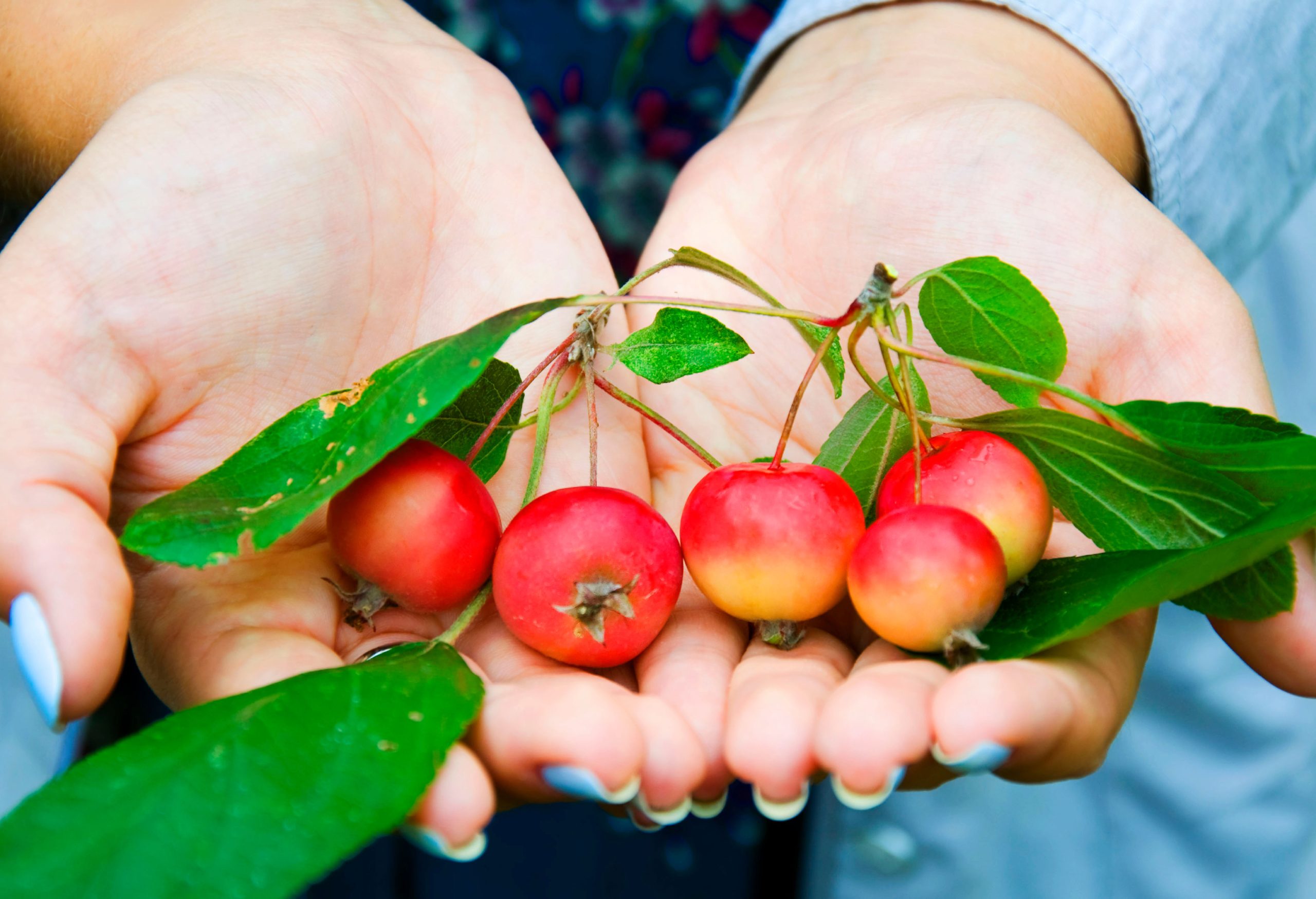I have always enjoyed crabapples during late summer early fall. They can be a little sour, but they make a good snack if you find them in the woods while you’re exploring.
Crabapples are a wild apple variety that is typically smaller than those sold in grocery stores. They’re usually less than 2 inches in diameter.
Even though one crabapple isn’t very tasty by itself, a tree full of them can be very tasty. This is because crabapples grow in groups. Apples from one tree can be used to make apple butter, apple sauce, jelly, cider, chutney, or pie.
Crab apples are a tasty wild fruit that can be used to make jellies, chutneys, ciders, and more. Though small, these wild apples grow abundantly on trees and can be found across much of the United States. With their pleasing tart flavor, learning where to find crab apples and how to harvest them can reward foragers with armloads of free fruit.
What are Crab Apples?
Crab apples are a type of wild apple native to North America. There are over 800 varieties of crab apples, with most growing no larger than 2 inches wide. Unlike cultivated grocery store apples, crab apples tend to be very tart, though some varieties are sweeter than others. Their flavor has been described as astringent or bittersweet.
Though tiny, what crab apples lack in size they make up for in volume. Each crab apple tree produces abundant clusters of fruit, allowing collectors to gather sizable hauls. The trees themselves range in height from 5 to 30 feet tall.
Where Do Crab Apple Trees Grow?
Crab apple trees can be found growing wild across most of the United States They thrive in temperate regions and are especially common in the Midwest and Northeast
Some places to look for wild crab apple trees include
- Parks
- Hiking trails
- Along streambanks
- Old orchards or homesteads
- Open woods, thickets, and grasslands
- Abandoned fields
Crab apple trees are fairly easy to spot, even without fruit. They have scaly, grayish bark and branches that spread as wide as the tree is tall. The leaves are oval, toothy, and arranged alternately along twiggy branchlets.
Once you locate a few crab apple trees, be sure to return in late summer and fall when the fruit is ripe for picking.
When to Harvest Crab Apples
Crab apples ripen from late summer through fall. The specific timing will vary slightly depending on your region and seasonal weather patterns.
Some tips for determining when crab apples are ready to harvest:
-
Wait until the fruit is fully ripe and soft to the touch before picking. Apples that are still hard are not ready.
-
Time your harvest for several weeks after the first frost, when crab apple flavor is richest.
-
Crab apples are best after a wet, rather than dry, summer. Drought conditions often produce mealy, inferior fruit.
-
Sample apples before harvesting. Flavor can vary from tree to tree. Only pick fruits that taste good!
How to Harvest Crab Apples
When you find a tree laden with ripe, tasty crab apples, harvesting is a simple affair:
-
Gently twist the apples to remove them from the branch or clip the stem with pruners. Be careful not to damage the tree.
-
Use care not to bruise the apples, which can accelerate spoilage.
-
Place picked apples gently into containers. Crab apples are delicate and squash easily.
-
Limit your harvest to fruit that is free of insect, disease, or animal damage.
-
Aim to collect crab apples on dry days close to harvest time. Wet fruit spoils faster.
-
For best flavor and storage, only collect crab apples that are fully ripe and ready to fall off the tree.
Enjoying Your Crab Apple Harvest
Once home with your foraged crab apples, there are endless sweet and tangy ways to put them to use:
-
Cook into applesauces, jams, jellies, butter, chutney, ketchup, fruit leather, pies, and more
-
Press into fresh cider or let ferment into hard cider
-
Dice up raw for use in salads, stuffings, relishes, and salsas
-
Dehydrate into chewy fruit leathers or rehydratable apple rings
-
Infuse into vinegar, cocktail syrups, or fragrant crab apple tea
With so many culinary uses, a harvest of foraged crab apples can provide homemade goodness all season long. Seek out wild crab apple trees near you and be rewarded with armloads of free fruit. Just be sure to leave some for the birds!

Where do crabapples grow?
Crabapples are common and widely distributed across the Midwest. They live in parks, old fields, grasslands, open woods, thickets, abandoned orchards, and old farmhouses. You can also find them near hiking trails.
Everything You Need to Know About Crabapples! | DAFT
FAQ
Where are crab apples found?
What month do you pick crab apples?
Are there crab apples in Florida?
How to pick crab apples?
Are there crab apples in Texas?
Are crab apples rare?
